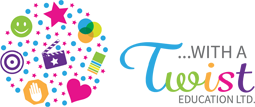Learning Style questionnaires help you learn by suggesting strategies you should be using to learn. In many cases it tells you something about yourself that you may or may not have known. Fundamentally, it helps you understand how you learn, so you can work smarter and not harder. It is a short and simple inventory that has been well-received by our Twisted Parents and Twisted Learners because its dimensions are intuitively understood, and its applications are practical.
V: Visual – Visual Learners are those who learn best through what they see as they think in images and pictures. They learn best when they use graphical ways to represent what they are studying. In fact, if these types of learners watched a cartoon in a foreign language without subtitles, they’d probably get just as much out of it as if it were in English.
- Use of Colour (ie. highlighters, underlining, assorted colour pens)
- Flash Cards with visuals on them
- Symbols instead of words (ie. positive = +)
- Draw & Re-draw notes (ie. diagrams, charts, concept maps)
- Practice turning visuals into test questions
- Source out videoʼs related to topic http://www.khanacademy.org/
A: Auditory – Auditory Learners learn best while they are actively listening. They prefer to ingest information through audio or video clips, or by discussing a topic. They are able to take in what they need simply by listening intently. Combine this with a tendency to want to talk, auditory learners can sometimes appear disruptive or uninterested in class. They think in words, like wordplay and puns, and love telling stories. They’re also the types of children who memorize things easily, from dates and spelling words to trivia — one reason they know all the words to their favourite songs.
- Attend all classes to Ask questions, Repeat answers & Read notes out loud (at home too)
- Dictate notes on an iPod
- Note examples or stories (as class shares any)
- Bring up outside of class (i.e. study group, dinner talk, play teacher)
- Send time in a quiet place recalling answers & if not possible, use ear plugs.
K: Kinesthetic – Kinesthetic Learners learn best when they are physically active, or through learning activities that involve active participation. They can be fidgety and not enjoy sitting still for extended periods of time, which sometimes comes across as disruptive or uninterested.
- Write down examples & cases in class, relate to something you do outside of class
- Demonstrations: Participate in, ask for & create your own (i.e. act out what you are learning)
- Use websites & models related to the topic
- Pace, exercise, tap while studying & Exercise the night before bigger exams, etc.
We’d love to talk this important decision through with you. Call us at: 1-866-977-4433 or fill out our detailed form online.
